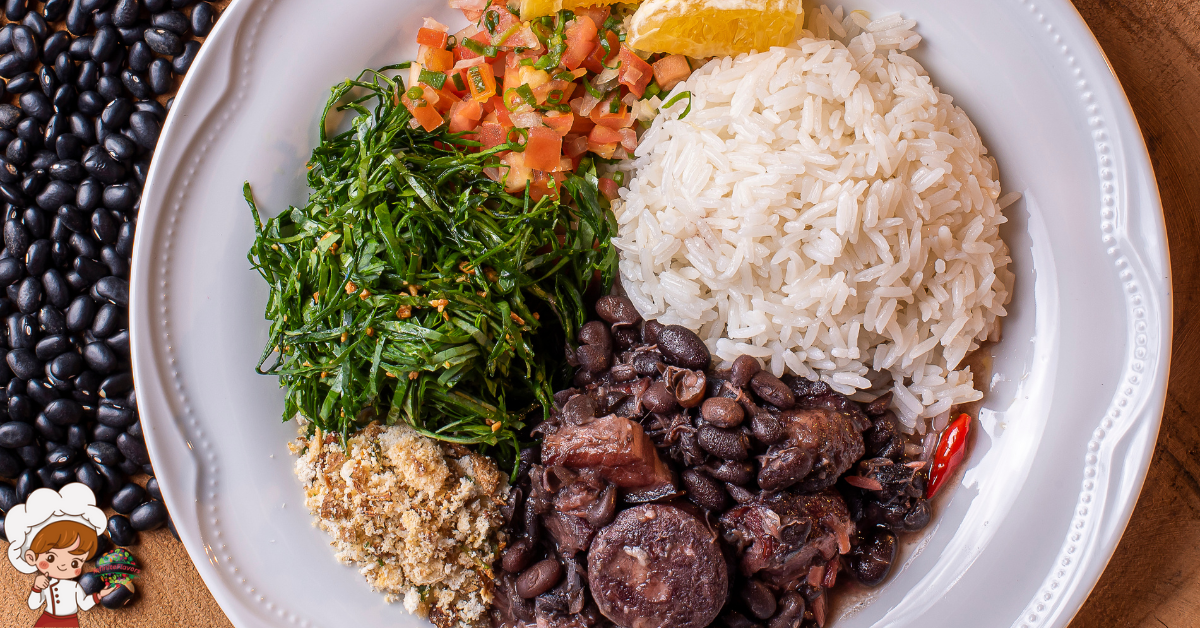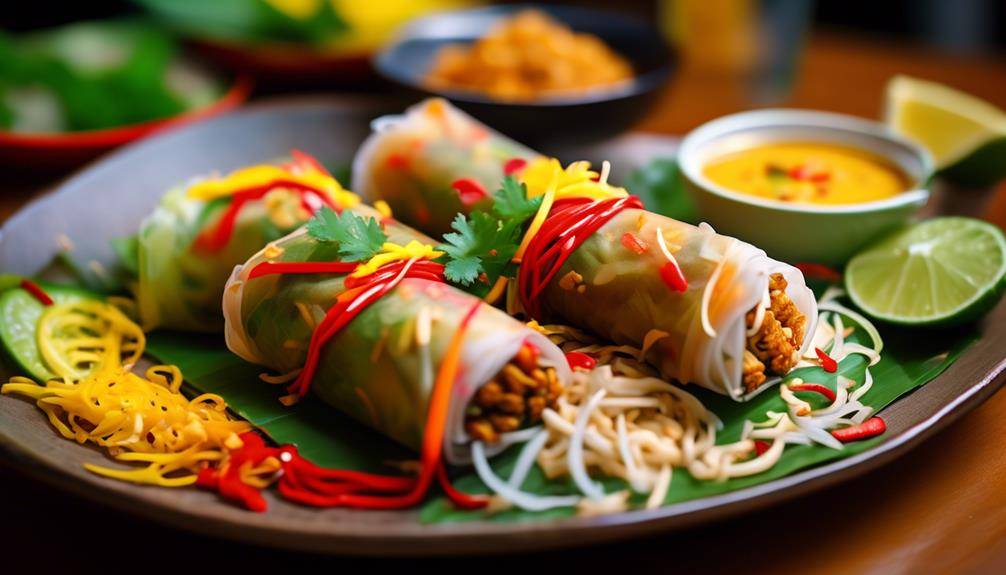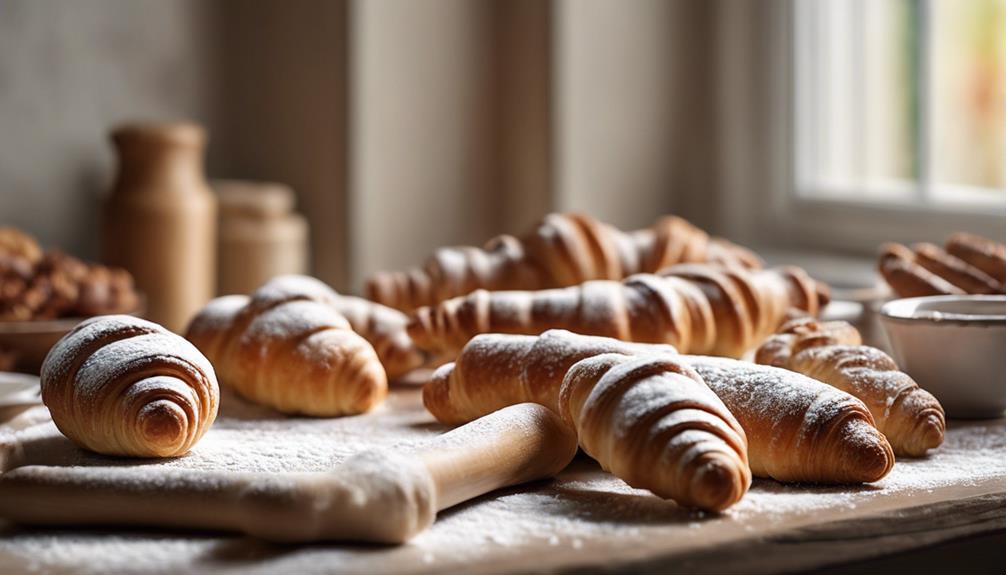Amazing Traditional Brazilian Dishes To Try

Amazing Traditional Brazilian Dishes To Try; Did you know that Brazil is a country rich in culinary traditions and flavors? From hearty stews to mouthwatering desserts, traditional Brazilian dishes offer a unique gastronomic experience that is worth exploring. Whether you are a fan of seafood, meat, or vegetarian options, Brazilian cuisine has something to offer for every palate. So, if you are ready to embark on a culinary journey and discover the flavors of Brazil, join us as we take a closer look at some of the most delicious and iconic dishes that you must try. Get ready to tantalize your taste buds and experience the vibrant and diverse flavors of Brazil’s traditional cuisine.
Feijoada – A Hearty Black Bean Stew
Feijoada, a hearty black bean stew, is a beloved traditional Brazilian dish that will satisfy both your taste buds and your hunger. This iconic dish has a rich history that dates back to the time of slavery in Brazil. It originated from the necessity to use every part of the pig, including the less desirable cuts, which were then combined with black beans and various spices to create a flavorful and filling meal.
The history of feijoada is deeply intertwined with the African influence in Brazilian cuisine. Slaves would cook feijoada using the ingredients they had available, such as black beans and pork, which were staple foods in their diet. Over time, feijoada evolved and incorporated other ingredients like smoked sausages, beef, and even seafood, depending on the region. Today, feijoada is considered a national dish of Brazil and is commonly enjoyed during festive occasions and gatherings.
There are also regional variations of feijoada throughout Brazil. In Rio de Janeiro, feijoada carioca is the most popular variation. It is made with black beans, pork, and a variety of smoked meats, served with rice, collard greens, and farofa (toasted cassava flour). In the northeastern state of Bahia, feijoada baiana includes additional ingredients like palm oil, coconut milk, and dendê oil, giving it a unique flavor profile.
Feijoada is not just a meal; it is a cultural experience that showcases the diversity and history of Brazil. Its rich flavors and hearty nature make it a true comfort food that will leave you feeling satisfied and connected to the vibrant culinary traditions of this beautiful country. So, why not indulge in a bowl of feijoada and experience the taste of Brazil for yourself?
Coxinha – Delicious Chicken-Filled Dumplings
As you explore the diverse and delicious traditional dishes of Brazil, prepare to tantalize your taste buds with the irresistible Coxinha – delectable chicken-filled dumplings. Coxinha, which translates to “little thigh,” is a popular snack that has its roots in the late 19th century. Legend has it that it was created by a cook in São Paulo who wanted to honor Princess Isabel’s visit by making a dish that resembled her small, delicate hands. Since then, Coxinha has become a beloved treat across the country, enjoyed by people of all ages.
The history of Coxinha reveals its versatility and adaptability. While the classic version features shredded chicken, there are numerous variations available today. Some cooks add cream cheese to the filling, creating a creamy and flavorful twist. Others incorporate spices and herbs to enhance the taste. Additionally, some regions even offer vegetarian options with fillings such as hearts of palm or cheese. The dough, made from a mixture of wheat flour, butter, and chicken broth, is shaped like a teardrop, resembling a chicken thigh.
The beauty of Coxinha lies not only in its delicious taste but also in its portability. It is often served at parties, street food stalls, and even found in supermarkets. Its golden, crispy exterior gives way to a moist and flavorful filling, creating a delightful contrast of textures. Whether enjoyed on its own or paired with a dipping sauce like hot sauce or catupiry, Coxinha is a dish that will leave you craving for more.
Moqueca – Flavorful Seafood Stew
Prepare to immerse yourself in the vibrant flavors of Brazil with the irresistible Moqueca – a flavorful seafood stew that will transport your taste buds to the shores of this South American paradise.
- The history of moqueca dates back centuries, originating from the indigenous tribes of Brazil. Passed down through generations, this traditional dish has evolved to become a staple in Brazilian cuisine.
- Regional variations of moqueca can be found throughout Brazil, each offering a unique twist on the classic recipe. In the northeastern state of Bahia, the dish is known as “Moqueca Baiana” and is made with dende oil, coconut milk, and a mix of local spices. In the southeast, particularly in Espírito Santo, the “Moqueca Capixaba” is prepared with tomato sauce, annatto oil, and without the addition of coconut milk. These regional differences showcase the diversity and creativity of Brazilian culinary traditions.
Moqueca is a culinary masterpiece that brings together an array of fresh seafood, aromatic herbs, and spices. The key to its rich and complex flavor lies in the slow cooking process, allowing the ingredients to meld together harmoniously. The stew is typically made with a combination of fish, shrimp, and other shellfish, which are simmered in a fragrant broth made from tomatoes, onions, garlic, and bell peppers. The addition of coconut milk adds a creamy sweetness that balances out the spices and enhances the overall taste.
As you take your first spoonful of Moqueca, you will be greeted with a burst of flavors that dance on your palate. The tender seafood, infused with the aromatic broth, creates a symphony of tastes that is both comforting and exotic. The dish is often accompanied by traditional Brazilian side dishes such as rice, farofa (toasted cassava flour), and pirão (a creamy fish sauce).
Indulge in the tantalizing flavors of Moqueca, and let it transport you to the sun-drenched beaches of Brazil, where the vibrant culture and culinary traditions come alive in every bite.
Pão De Queijo – Cheesy Bread Rolls
Indulge in the heavenly delight of Pão De Queijo, the mouthwatering cheesy bread rolls that will transport you to the heart of Brazilian cuisine. These small, golden-brown rolls are a staple in Brazilian households and can be found in bakeries and restaurants across the country. But what is the history behind this delectable treat?
Pão De Queijo, which translates to “cheese bread” in English, originated in the state of Minas Gerais, known for its rich culinary traditions. It is believed that the recipe was developed by African slaves, who used tapioca starch as a substitute for wheat flour, which was scarce at the time. Over the years, the recipe evolved, and cheese was added to create the cheesy goodness we know today.
While the classic Pão De Queijo consists of tapioca starch, cheese, eggs, and milk, there are also variations of this beloved Brazilian snack. Some recipes use different types of cheese, such as Parmesan or cheddar, to add a unique flavor. Others incorporate additional ingredients like herbs, spices, or even bacon to enhance the taste.
In recent years, Pão De Queijo has gained popularity outside of Brazil, with many restaurants and food stalls serving their own interpretations of this cheesy delight. Some places even offer sweet versions, where the dough is mixed with sugar and filled with chocolate or other sweet fillings.
No matter the variation, Pão De Queijo remains a beloved treat that captures the essence of Brazilian cuisine. Its crispy exterior and gooey, cheesy center are a winning combination that will leave you craving more. So, if you want to experience a taste of Brazil, make sure to indulge in a warm, freshly baked Pão De Queijo – your taste buds will thank you.
Acarajé – Deep-Fried Black-Eyed Pea Balls
When it comes to traditional Brazilian cuisine, one dish that stands out is Acarajé – deep-fried black-eyed pea balls. These golden, crispy balls are a beloved street food in Brazil, with a rich history dating back to the time of slavery. Made from a mixture of black-eyed peas, onions, and spices, Acarajé is then deep-fried to perfection. Whether enjoyed on its own or filled with a variety of delicious toppings such as shrimp, vatapá, and caruru, Acarajé is a must-try dish that offers a burst of flavors and textures.
History of Acarajé
With its origins rooted in West Africa, the history of Acarajé takes us on a flavorful journey through the vibrant culinary traditions of Brazil. This deep-fried delicacy is more than just a snack; it carries deep cultural significance and tells a story of heritage and tradition. Here are three key aspects that shed light on the rich history and cultural significance of Acarajé:
- Afro-Brazilian Influence: Acarajé is a testament to the strong Afro-Brazilian influence in Brazilian cuisine. Brought to Brazil by enslaved Africans, it combines African flavors and techniques with local ingredients, creating a unique and delicious dish.
- Religious Significance: Acarajé is closely associated with the Afro-Brazilian religion of Candomblé. It is often offered as a sacred food to the deities, reflecting the spiritual connection between food and religion in Brazilian culture.
- Culinary Tradition: Acarajé is a beloved street food in Brazil, particularly in the northeastern region. It represents the culinary heritage passed down through generations, preserving the flavors and techniques that have been cherished for centuries.
The history of Acarajé is a testament to the diverse cultural tapestry of Brazil, where food serves as a bridge between the past and the present, connecting people and traditions.
Ingredients for Acarajé
Continuing our exploration of the history of Acarajé, let’s now turn our attention to the essential ingredients that come together to create these delectable deep-fried black-eyed pea balls. The ingredients for Acarajé are simple yet crucial in capturing the authentic flavors and cultural significance of this traditional Brazilian dish. The main ingredient is black-eyed peas, which are soaked, ground, and mixed with onions, salt, and spices.
This mixture is then shaped into small balls and deep-fried until golden brown. The golden-brown Acarajé balls are traditionally split open and filled with a flavorful mixture of shrimp, dried shrimp, onions, tomatoes, and spices. The combination of the crispy exterior and the savory filling creates a unique taste experience that represents the rich culinary history and cultural heritage of Brazil.
Serving Suggestions for Acarajé
To enhance the dining experience with Acarajé – deep-fried black-eyed pea balls, consider these creative serving suggestions. These serving suggestions not only highlight the unique flavors and textures of acarajé but also pay homage to traditional cooking techniques for acarajé:
- Serve with Vatapá: Vatapá is a rich and creamy sauce made from shrimp, coconut milk, ground peanuts, and palm oil. Drizzle the acarajé with this flavorful sauce to add an extra layer of richness and complexity.
- Pair with Caruru: Caruru is a traditional okra stew that complements the crispy exterior and soft interior of acarajé. The sliminess of the okra adds a unique texture while the spices and herbs enhance the overall taste.
- Garnish with Diced Veggies: Add a fresh and crunchy element to your acarajé by topping it with a colorful mix of diced tomatoes, onions, and cilantro. This adds a refreshing contrast to the deep-fried goodness.
Brigadeiro – Sweet Chocolate Truffles
Brigadeiro, a delectable sweet treat enjoyed by many, is a traditional Brazilian dish that consists of rich chocolate truffles. These irresistible bite-sized delights are a staple at Brazilian parties and celebrations. To truly appreciate the brigadeiro, it is important to understand its history and the various flavors it comes in.
The history of brigadeiro dates back to the 1940s when it was created as a fundraising treat for the Brazilian presidential campaign. It quickly gained popularity and became a beloved dessert across the country. Traditionally, brigadeiros are made by simmering condensed milk, cocoa powder, butter, and chocolate sprinkles until thickened and then rolling the mixture into small balls. However, over the years, the dish has evolved and now offers a range of exciting variations.
One of the unique aspects of brigadeiro is the array of flavors available. While the classic version remains a favorite, Brazilian chefs have experimented with different ingredients to create new and interesting combinations. From coconut and peanut butter to pistachio and caramel, the options are endless. These innovative flavors add a delightful twist to the traditional treat and cater to a variety of palates.
Whether you have a sweet tooth or simply enjoy exploring new flavors, brigadeiro is a must-try Brazilian delicacy. Its rich and creamy texture, combined with the intense chocolate flavor, makes it a truly indulgent experience. So, the next time you find yourself in Brazil or stumble upon a Brazilian bakery, be sure to treat yourself to these heavenly sweet chocolate truffles. You won’t be disappointed.
Vatapá – Creamy Shrimp and Nut Stew
Creamy and packed with flavors, Vatapá is a traditional Brazilian dish that combines succulent shrimp and a medley of nuts in a velvety stew. This mouthwatering dish originates from the northeastern part of Brazil and is a staple in the region’s cuisine. The name “vatapá” is derived from the African word “watapá,” which means “a thick sauce” or “paste.” Vatapá is known for its rich and creamy texture, achieved by blending together ingredients such as shrimp, coconut milk, cashews, peanuts, and bread crumbs.
To truly appreciate the complexity of flavors in Vatapá, it is important to understand the traditional Brazilian spices that are used. Dendê oil, made from palm fruit, is a key ingredient in this dish, adding a distinctive and slightly nutty flavor. Additionally, ground ginger, garlic, and onions are sautéed to create a fragrant base for the stew. These spices not only enhance the taste but also contribute to the vibrant and aromatic nature of Brazilian cuisine.
Vatapá variations are common, with each region and family having their own unique twist. Some recipes call for the addition of dried shrimp or fish stock, further intensifying the seafood flavors. Others incorporate ingredients like tomatoes, bell peppers, and cilantro to add freshness and balance. The dish can be served with white rice, farofa (toasted cassava flour), or acarajé (fried black-eyed pea dough) for a complete and satisfying meal.
If you are looking to experience the diverse flavors of Brazil, Vatapá is a must-try dish. Its creamy consistency, combined with the richness of the shrimp and the crunch of the nuts, creates a truly delightful culinary experience. Whether you enjoy it as a main course or as a side dish, Vatapá will transport your taste buds to the vibrant streets of Brazil.
Quindim – Rich Coconut Custard Dessert
With its decadent and tropical flavors, Quindim is a luscious coconut custard dessert that will transport you to the sunny beaches of Brazil. This sweet treat is a staple in Brazilian cuisine and holds a significant cultural significance. Let’s explore the variations and regional differences of Quindim, as well as its importance in Brazilian culinary traditions.
Quindim comes in various forms and flavors, depending on the region of Brazil. In the southern states, such as Rio Grande do Sul, the dessert is often made with an added touch of almonds or walnuts, giving it a unique nutty flavor. In the northeastern states, like Bahia, Quindim is traditionally made with a hint of lime zest, adding a refreshing twist to the creamy custard. These regional variations showcase the diverse culinary landscape of Brazil, highlighting the creativity and adaptability of its people.
Beyond its taste, Quindim holds cultural significance in Brazilian cuisine. The dessert is believed to have originated from African influences during the colonial era. Its name is derived from the African word “kintin,” meaning “gold,” which refers to the bright yellow color of the custard. Quindim is often served during special occasions and celebrations, such as weddings and birthdays, symbolizing joy, abundance, and unity among family and friends.
In addition to its cultural importance, Quindim is also a reflection of Brazil’s rich natural resources. The use of coconuts in the dessert represents the country’s tropical climate and its close connection to nature. The creamy texture and sweet taste of Quindim evoke a sense of indulgence and pleasure, making it a favorite among locals and visitors alike.
Caipirinha – Brazil’s National Cocktail
The next culinary delight that will take you on a journey through the vibrant flavors of Brazil is the iconic Caipirinha, a refreshing and tangy cocktail that embodies the spirit of the country’s lively culture. Made with cachaça (a Brazilian sugarcane liquor), fresh lime, sugar, and crushed ice, this cocktail is a must-try for any visitor to Brazil. Let’s dive into the history of Caipirinha and explore some of its exciting variations.
- History of Caipirinha: The origins of Caipirinha can be traced back to the early 20th century in the rural regions of Brazil. It was initially created as a medicinal drink to alleviate symptoms of the common cold. Over time, it evolved into a popular cocktail enjoyed by locals and tourists alike. Today, Caipirinha has become an integral part of Brazilian culture and is often associated with the country’s vibrant carnival celebrations.
- Variations of Caipirinha: While the classic Caipirinha recipe remains the most popular, there are several variations that add a twist to this beloved cocktail. One such variation is the Caipiroska, which replaces cachaça with vodka, resulting in a smoother and less sweet flavor profile. Another variation is the Caipifruta, which incorporates different fruits like passion fruit, pineapple, or strawberry, adding a burst of tropical flavors to the drink. Additionally, some mixologists experiment with herbs, spices, and even different types of liquor to create unique and innovative versions of Caipirinha.
Indulging in a Caipirinha is not just about enjoying a drink; it is about immersing yourself in the culture and spirit of Brazil. So, whether you choose to sip on the classic recipe or venture into the world of variations, be prepared to be captivated by the vibrant and refreshing flavors that Caipirinha has to offer. Cheers to a taste of Brazil!
Bobó De Camarão – Creamy Shrimp and Cassava Stew
Get ready to indulge in the flavors of Brazil with the creamy and delicious Bobó De Camarão. This traditional seafood stew combines succulent shrimp with the richness of cassava, creating a dish that is both comforting and satisfying. With its unique blend of spices and creamy texture, this Brazilian recipe is sure to impress your taste buds and transport you to the vibrant streets of Brazil.
Flavorful Seafood Stew
Indulge your taste buds with the irresistible flavors of Bobó De Camarão, a creamy shrimp and cassava stew that will transport you straight to the vibrant coastal regions of Brazil. This flavorful seafood stew is a staple in traditional Brazilian cuisine and is beloved for its rich and comforting taste. The combination of succulent shrimp, creamy cassava, and aromatic spices creates a symphony of flavors that will leave you craving for more. Here are three reasons why you should give Bobó De Camarão a try:
- It showcases the freshness of Brazilian seafood, with plump and juicy shrimp as the star ingredient.
- The creamy texture of the stew, thanks to the addition of cassava, adds a luxurious touch to every spoonful.
- The harmonious blend of spices, such as garlic, onions, and cilantro, elevates the dish and adds complexity to the overall flavor profile.
Don’t miss the opportunity to experience the magic of Bobó De Camarão and immerse yourself in the culinary wonders of Brazil’s coastal regions.
Traditional Brazilian Recipe
If you’re looking to elevate your culinary repertoire and immerse yourself in the vibrant flavors of Brazil, it’s time to try your hand at making the traditional Brazilian dish, Bobó De Camarão – a creamy shrimp and cassava stew that will transport your taste buds to the coastal regions of Brazil. This delicious recipe combines the richness of shrimp with the creaminess of cassava to create a dish that is both comforting and indulgent.
The flavors are bold and complex, with hints of coconut, lime, and spices. The creamy texture of the stew is perfectly balanced by the freshness of the shrimp. To complement your meal, you can also explore traditional Brazilian drinks such as caipirinha or guaraná. And if you’re craving something quick and satisfying, don’t forget to try popular Brazilian street food like coxinha or pastel. With these traditional Brazilian recipes, you can bring the vibrant flavors of Brazil right into your own kitchen.
Frequently Asked Questions: Amazing Traditional Brazilian Dishes To Try
Can I Find These Traditional Brazilian Dishes in Restaurants Outside of Brazil?
You can find these traditional Brazilian dishes in Brazilian themed restaurants outside of Brazil. The authenticity of the dishes may vary, but they still offer a taste of the culture and flavors of Brazil.
Are These Dishes Typically Spicy or Mild in Flavor?
Traditional Brazilian dishes can range from mild to spicy in flavor, depending on the region and the spices used. Common spices include garlic, cumin, and pepper. Each dish has its own unique blend of flavors, making them a must-try culinary experience.
Can I Easily Find the Ingredients for These Dishes in My Local Grocery Store?
You can find Brazilian ingredients in your local grocery store, but some may require a specialty store. Substituting ingredients for traditional Brazilian dishes can alter the flavor, but it’s still worth trying.
Are These Dishes Typically Served as Appetizers, Main Courses, or Desserts?
These dishes can be served as appetizers, main courses, or desserts. They are commonly served at Brazilian festivals and events. Their preparation is influenced by Brazilian culture. They can be adapted to suit different dietary restrictions, such as gluten-free or dairy-free options.
Are There Any Vegetarian or Vegan Options Among These Traditional Brazilian Dishes?
You’ll be pleased to know that there are plenty of vegetarian options in traditional Brazilian dishes. From feijoada without meat to acarajé with veggie fillings, you won’t miss out on flavor or variety.
Conclusion
In conclusion, traditional Brazilian dishes offer a tantalizing array of flavors and textures that are sure to please any palate. From the hearty black bean stew of Feijoada to the creamy shrimp and nut stew of Vatapá, these dishes showcase the rich culinary heritage of Brazil. Whether you’re craving savory or sweet, there is something for everyone to enjoy. So why not embark on a culinary adventure and indulge in the deliciousness of Brazilian cuisine?








